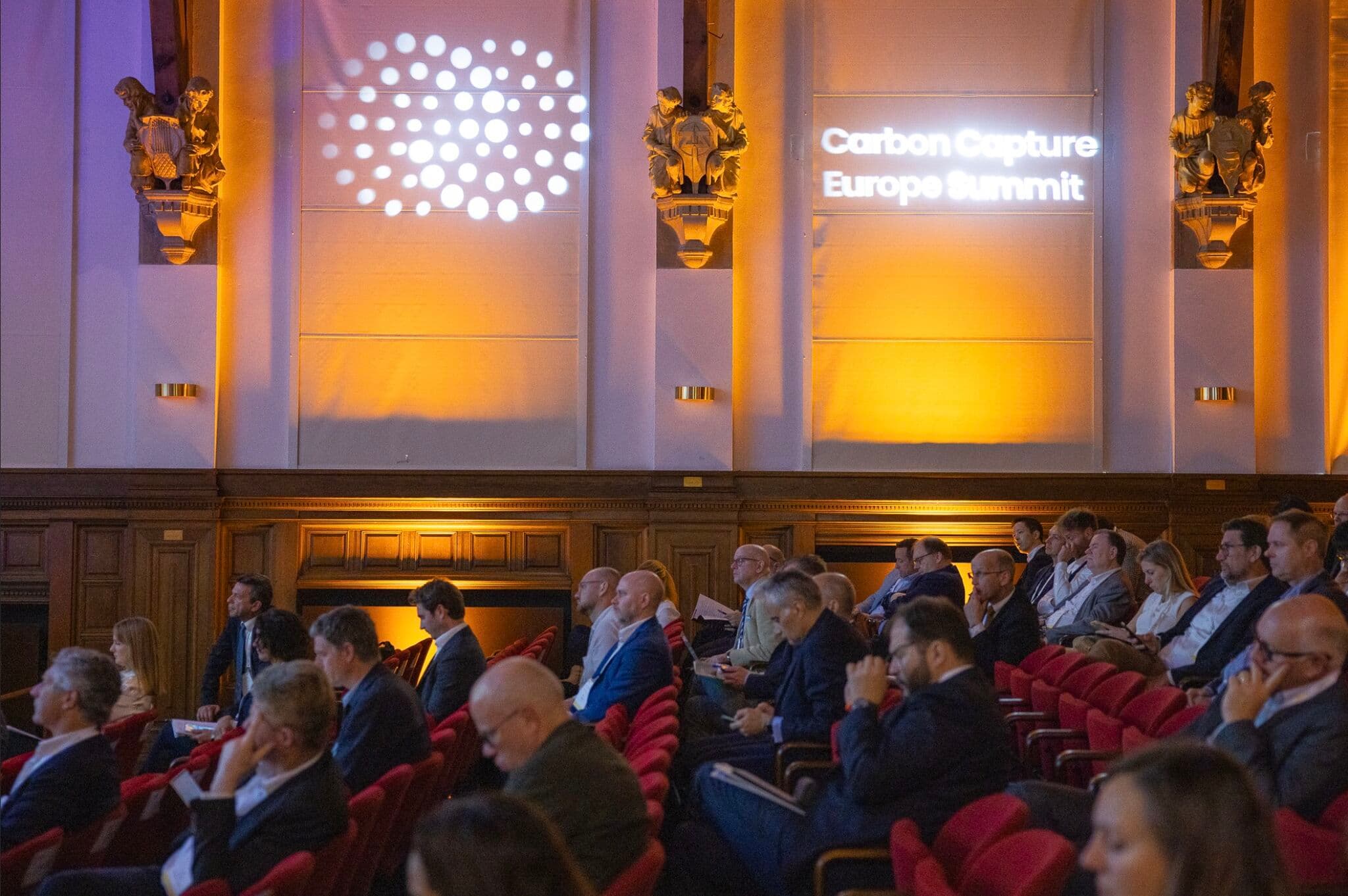Carbon capture in Europe: policies and startups to drive growth
Europe has ambitious goals for carbon capture. According to experts, the contribution of policies and startups will push this growth.
Published on May 6, 2025

© Carbon Capture Europe Summit
Mauro swapped Sardinia for Eindhoven and has been an IO+ editor for 3 years. As a GREEN+ expert, he covers the energy transition with data-driven stories.
Complementary to all the efforts to reduce greenhouse gas emissions, primarily phasing out fossil fuels for renewables, there is Carbon Capture, Utilization, and Storage (CCUS). CCUS encompasses a range of technologies to sequester, store underground, or utilize carbon dioxide. By 2030, the European Union targets storing 50 million tonnes of CO2 annually. In 2023, 1.9 million tonnes were captured.
Last week, European industry experts gathered in Amsterdam for the Carbon Capture Europe Summit. Part of the event focused on what is needed to scale and accelerate technology so as to achieve the 2030 target. Two elements emerge: the need for policy and the need to foster startups working on technological solutions.
Carbon capture efforts from the concrete industry
Hard-to-abate industries and some of the largest CO2 emitters are the toughest to decarbonize. Among them is the cement industry, which requires high energy inputs to reach the high temperatures needed for manufacturing. The cement industry is responsible for 8% of the global CO2 emissions. The industry is open to change.
Evita Gosa from the cement company SCHWENK Latvija was on stage. As the leading cement company in the Baltic region, it plans to kickstart carbon capture initiatives by 2030. In this endeavor, Gosa also called for harmonization of regulatory frameworks, including carbon dioxide standards, and storage sites.
Denmark is one of the countries that is leading the charge on CCUS. The executive director of concrete producer Aalborg Portland, Michael Lundgaard Thomsen, delved into the technicalities of the ACCSION Project. The initiative will sequester 1.5 million tons of CO2 annually at the Danish Aalborg plant by 2029.
Help from policymakers
Eve Tamme, chair of the advising firm Zero Emissions Platform (ZEP), emphasized the need for policy support and collaboration to scale CCUS technologies. "We need clear plans for CO2 infrastructure in Europe and standardized accounting schemes to incentivize both private and public sectors," Tamme said. She also stressed the importance of integrating CCUS with other climate policies, such as sustainable aviation fuel mandates, to create a holistic approach to carbon management.
The rise of direct air capture
Direct air capture (DAC) is one of the emerging carbon capture technologies. It consists of sequestrating CO2 from the air, rather than at the source of an emitter, as is the case in industrial plants. Given the lower concentration of carbon dioxide in the air, capture is more challenging.
"Capturing CO2 from the atmosphere is always going to cost more energy compared to point sources, but from an economic perspective, it can make a lot of sense, especially in regions with cheap renewable electricity," explained CEO Hans de Neve of DAC scaleup Carbyon.
Gudfinnur Sveinsson is the co-founder and CEO of Brineworks, a company developing an electrolyzer technology for capturing CO2 from seawater. "Our technology allows us to extract CO2 directly from seawater, which continuously pulls CO2 from the atmosphere," Sveinsson said. He highlighted the importance of low-cost solutions that can operate intermittently, leveraging renewable energy sources like solar and wind.
Collaboration
Experts on stage agreed that collaboration and standardization are key to reducing costs and maximizing efficiency. Rob van Straten, CEO of DAC startup Skytree, discussed the benefits of manufacturing and supply chain optimization. "Standardization and mass manufacturing can significantly reduce costs," Van Straten said. He also emphasized the need for de-risking technologies to make projects more bankable.
Steve Kelly from 1PointFive, a company developing CCUS solutions, highlighted the importance of innovation cycles and supply chain buying power. "We are constantly looking for ways to simplify the technology and drive down costs through research and development," Kelly said. He also stressed the need for collaboration across the value chain to manage risks effectively.
To this extent, collaboration can happen on many levels. Openness will be needed from companies sharing knowledge to partnerships with established manufacturers to ease device production.
Action
Overall, the necessity for long-term planning, targeted financing schemes, and cross-national collaboration to scale carbon capture technologies effectively emerged. "We have the technology and the industry commitment; now we need the policy support to make it happen," Tamme said. As the 2030 target looms, there surely is a need for action.
